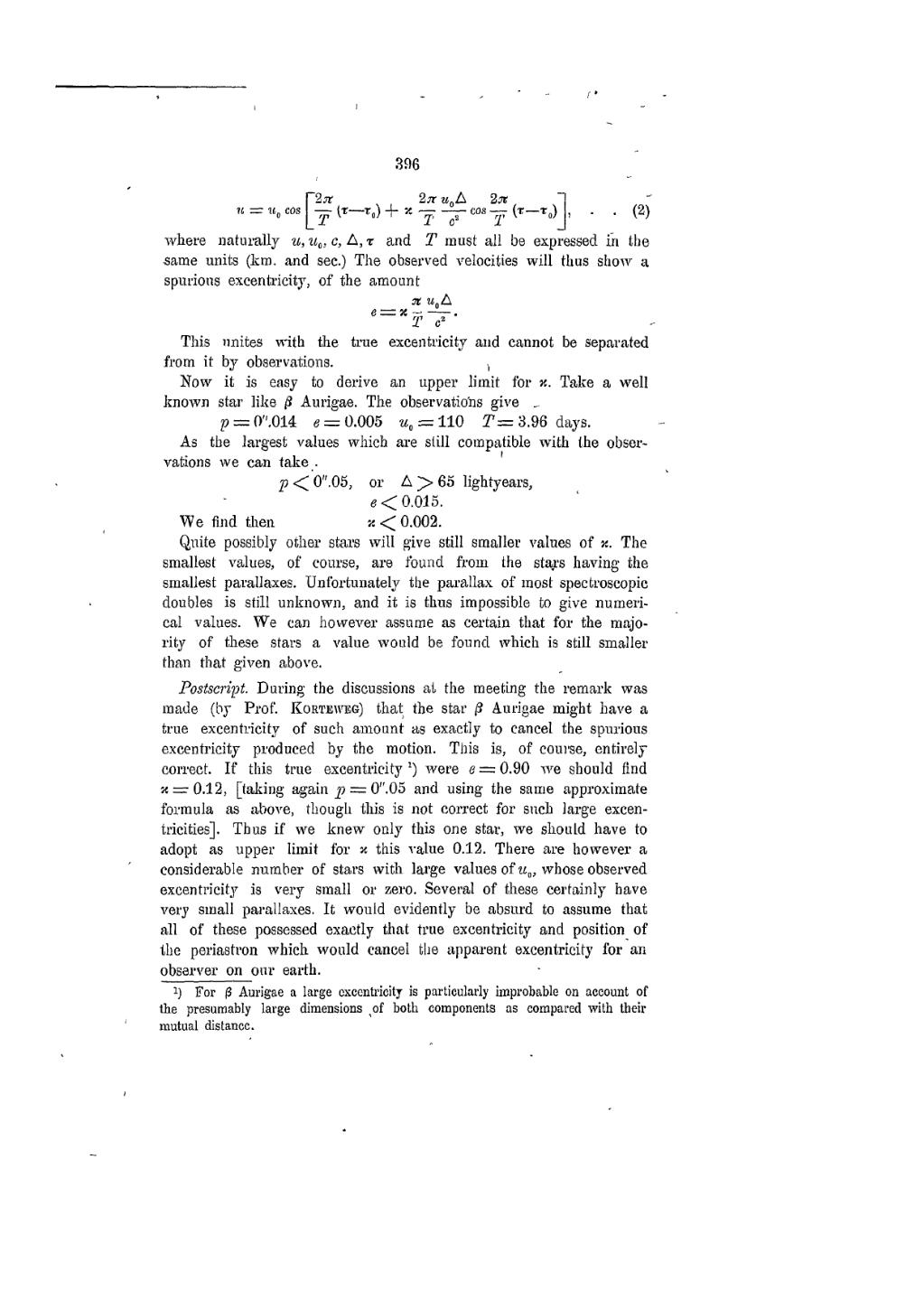396
| (2) |
where naturally u, u0, c, Δ, τ and T must all be expressed in the same units (km. and sec.) The observed velocities will thus show a spurious excentricity, of the amount
This unites with the true excentricity and cannot be separated from it by observations.
Now it is easy to derive an upper limit for . Take a well known star like β Aurigae. The observations give
| p=0".014 | e=0.005 | u0=110 | T=3.96 days |
As the largest values which are still compatible with the observations we can take
We find then
Quite possibly other stars will give smaller values of . The smallest values, of course, are found from the stars having the smallest parallaxes. Unfortunately the parallax of most spectroscopic doubles is still unknown, and it is thus impossible to give numerical values. We can however assume as certain that for the majority of these stars a value would be found which is still smaller than that given above.
Postscript. During the discussions at the meeting the remark was made (by Prof. Korteweg) that the star β Aurigae might have a true excentricity of such amount as exactly to cancel the spurious excentricity produced by the motion. This is, of course, entirely correct. If this true excentricity[1] were e=0.90 we should find , [taking again p=0".05 and using the same approximate formula as above, though this is not correct for such large excentricities]. Thus if we knew only this one star, we should have to adopt as upper limit for this value 0.12. There are however a considerable number of stars with large values of u0, whose observed excentricity is very small or zero. Several of these certainly have very small parallaxes. It would evidently be absurd to assume that all of these possessed exactly that true excentricity and position of the periastron which would cancel the apparent excentricity for an observer on our earth.
- ↑ For β Aurigae a large excentricity is particularly improbable on account of the presumably large dimensions of both components as compared with their mutual distance.
![{\displaystyle u=u_{0}\cos \left[{\frac {2\pi }{T}}\left(\tau -\tau _{0}\right)+\varkappa {\frac {2\pi }{T}}{\frac {u_{0}\Delta }{c^{2}}}\cos {\frac {2\pi }{T}}\left(\tau -\tau _{0}\right)\right],}](https://wikimedia.org/api/rest_v1/media/math/render/svg/a2ade0877520b3714205bb8826bf9fff84c0a822)




